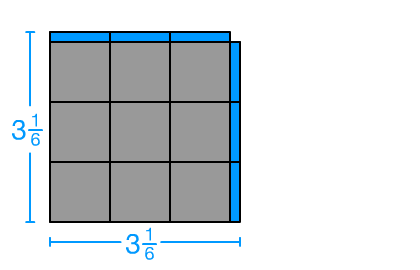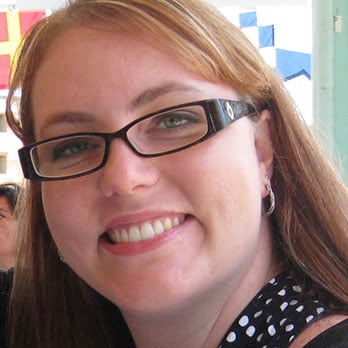
Our Mathematics Awareness Month (#MathAware) series of challenges continues this week with an invitation to try a visual way of approximating the square root of a number that is not a perfect square.
While our first challenge paid tribute to the 2014 #MathAware theme of Mathematics, Magic, and Mystery, this week’s topic salutes MIND Research Institute’s first-ever Math Fair: At the Square Root of Fun. This free, family-friendly event will be held Aug. 2 at the UC Irvine Bren Events Center. Please mark your calendars, and be sure to sign up for event updates.

Now, on to our Approximating Square Roots challenge…
As an example, let’s find the square root of 10. First, imagine 10 unit squares:

If we try to form a square without cutting the units into parts, the best we can do is a 3x3 square with 1 unit left over:
 This shows us that the square root of 10 is greater than 3. Next, if we cut the leftover unit into 6 equal parts, we can easily add them to our 3x3 square, like this:
This shows us that the square root of 10 is greater than 3. Next, if we cut the leftover unit into 6 equal parts, we can easily add them to our 3x3 square, like this:
 The shape this forms has an area of 10. It is not exactly a square — as you can see, there’s a piece missing from the top right corner — but it’s close. And now we can determine that the width and height of this almost-square are each 3 + 1/6:
The shape this forms has an area of 10. It is not exactly a square — as you can see, there’s a piece missing from the top right corner — but it’s close. And now we can determine that the width and height of this almost-square are each 3 + 1/6:
 Therefore, we can infer that the square root of 10 is approximately 3 1/6 (or 3.166…, which is darn close to the actual square root value of 3.162…).
Therefore, we can infer that the square root of 10 is approximately 3 1/6 (or 3.166…, which is darn close to the actual square root value of 3.162…).
This method only gives a quick and rough approximation, but we at MIND Research are big fans of visual-based problem solving, so we think it’s a pretty neat technique.
Would you like to give it a try at home or in the classroom? Perhaps challenge your students to approximate the square root of numbers like 5, 17, or 26? See if you can extend the technique to numbers like 6, 18, 27 and 38. How can you generalize even further? Let us know how it goes by posting a comment below or by connecting with us on Facebook or Twitter. Happy approximating!

Abby Daniels was Director of Communications at MIND Research Institute, where she worked for over 10 years as the organization transformed from a small, local nonprofit to a national leader in education.
Comment